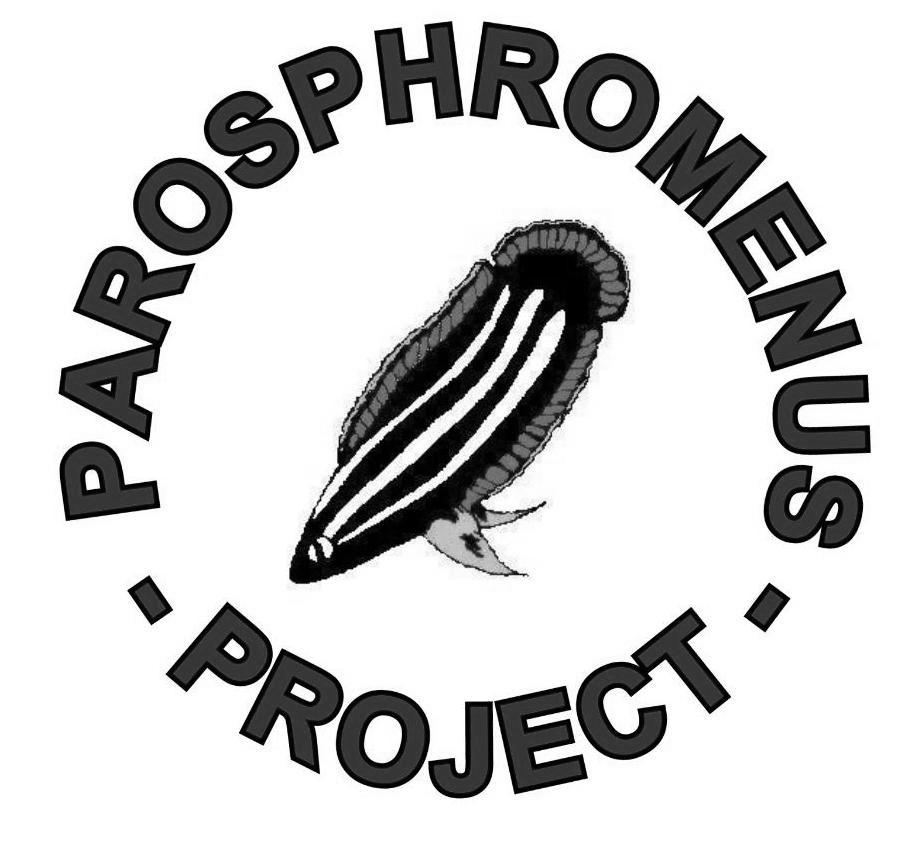Copenhagen September 15th 2016 Newsletter nr. 123
Dear Members of the Parosphromenus Project.
This ‘special issue’ Newsletter has been written by Helene Schoubye with special support from Benjamin Wilden and Peter Finke.
This Newsletter will be dedicated mainly to one important topic – The half-yearly Census.
We have chosen this topic, because The Census – Spring and Autumn each year, – is considered a very important activity, and we would like to explain a little about why it is so important, – and also add some in depth explanations regarding ‘How to’.
Beginning of Census
Census has been taking place for many years – also before the Parosphromenus Project started as an online activity. In the ‘early’ days it was an important instrument in order to keep knowing which species were present in private stocks, and in particular which species were ‘in danger’ of disappearing from private stocks.
It has absolutely been so, that some species has been ‘rescued’ because of the ability of the Census to bring attention to any particular species, – and to act quickly.
The purpose of Census
The reality of keeping Parosphromenus is that it is not characterized by a great stability. Species that are imported are rare, – and of very different quality, many times with uncertain identification. Imports and commercial traded fish are a very unstable source, – and once a species is ‘lost’ we cannot expect that this particular species will ever appear again commercially. Either because it simply isn’t being caught, or more seriously because suddenly biotopes becomes destroyed, and a particular species is lost.
There are a few species which are more often in commercial trade, but there are also many species or forms which are never imported.
Their presence in this project relies only on the fact that we keep an eye on where and how many are present within member stocks.
Therefore, it is important in this project, that we keep a very close eye on our stock at all times, – and every fish/species is important to register.
This way, we follow all the species which are present and when / if numbers are getting low, we act.
Taking part of course is voluntary, but we would like to stress, that we urge you to take the time and to report your stock, – no matter how small it may be. Sometimes we are able to ‘match’ single males and females this way also.
Often we see the same members reporting year after year, but often we think many new members may not take part for some reason.
We would like to stress, that we would very much like all members to take part, – and it is not bound by country boarders.
On the contrary – it also becomes a very good instrument in order to see – and show – the growth and the positive effect of our Project. It is a way to document that we are establishing the Project in many countries now, – such as the United States, UK, Eastern countries etc.
This is an important purpose too.
We actually see the personal and shared interest in the Parosphromenus group. Some of you report that they are not keeping fishes themselves. We don´t blame these members – we need them! They show us their support and interest in the project and may help in different ways.
Also you might argue that you reported you stock last time and nothing has changed. Well exactly this is the information we want. It represents a stabile stock. Whatever is said about the necessity of breeding, every stock that did not decrease is good news. Of course we all like a lot of reported offspring, but since we want to monitor a representative stock of our project, we value every single report, no matter that is reported.
How to :
We always remind you, – each April, and each October, and instructions are written on the homepage.
What is important to note is :
1. number of males, number of females and number of fish that hasn’t yet been determined (this can be fry, or it can be young with which are not yet showing sex identity)
2. Origin: Please note in any case where do you got the fish from. If it is wild caught, tell us the place of its occurrence (location). These fish are of special value; in the long run we try to build a stock exclusively form them. But mostly it’s from the aquarium trade; then say “trade”, or note the importer and date. If it’s from a known breeder, tell us the name of the breeder.
3. Identification: Identification is a great problem, especially with the less well known species. Examples: trade fish reported to be e.g. P. “gunawani” or more often P. “deissneri”. Please, put these fish in “quotation marks” if you doubt the identification yourself. Maybe, we do it with some reports if the identification is doubtful to us. Species like rubrimontis and tweediei are sometimes sold in the trade, but the identification is often doubtful. Use the quotation marks to indicate your unease.
4. Other matters: Tell us with short words what you miss, suggest or expect in the census. But mind: The thing must remain easy to handle. We cannot strive at the perfect result.
With this ‘special issue’ concerning Census, we hope that many of you will take the time and participate in the upcoming October Census which will begin here on October 1. and finish November 1. 2016
Many kind regards on behalf of the Parosphromenus Project, –
Helene Schoubye


